
The Social Security
Board of Trustees
Just Updated Its 2026
Cost-of-Living Adjustment
(COLA) Forecast.
Here's How Much
Your Benefits Could Increase.

While we're still months away from the official announcement for next year's COLA, multiple analysts have published their best estimate for what kind of pay bump retirees could receive next year.
read more
President Donald Trump
broke His Social Security Vow
-- and It May Be
the Best Thing
That's Happened
to Retirees

The consolation prize retirees received from the One Big Beautiful Bill is arguably a bigger win than ending the tax on benefits.
read more
Would You Want To Know
Your Alzheimer’s Risk?
Scientists Uncover Hidden Toll

The findings revealed a notable gap between the number of participants who said they would want to receive their risk results if given the chance, and the number who actually chose to receive them when the offer was real.
read more
Sedentary time linked
to faster brain aging
in older adults, study finds

Prolonged sedentary behavior is associated with a range of negative health outcomes, including increased risks of heart disease, obesity, type 2 diabetes, and certain cancers.
From mirror rituals to laugh diets and brain puzzles, these 9 habits reveal how some 70-year-olds are quietly aging in reverse—one curious choice at a time.
read more
Older adults
now outnumber children
in 11 states
Older childless Americans
worry about who'll
care for them
— do these 4 things
if you’re 50-plus
with no kids

Many people are using online grocery shopping through apps like Instacart, Amazon, or Walmart. This method is popular for its convenience; it saves time and effort by allowing customers to order groceries from home without dealing with parking or long lines. It's especially helpful for those with mobility issues, as it provides access to necessary supplies during difficult times, such as bad weather or health problems.However, some shoppers feel disconnected from the experience. Older adults, in particular, may feel they are losing their independence and control when they rely on these services. Previously, shopping was an active part of their routine that kept them engaged. Now, choosing food and managing a grocery list can feel done for them. There are concerns that this dependence on technology might limit their ability to shop independently in the future.Online shopping can also be impersonal, as customers cannot inspect the freshness of produce or guarantee the accuracy of their orders. Some items may arrive incorrectly, which can be more stressful for older adults who value reliability. While more seniors are trying online grocery services, many find the technology daunting and might need help from family members. Despite the ease of online shopping, many still miss the personal connections with store staff and the enjoyment of physically browsing.In conclusion, the shift to online grocery shopping has both advantages and challenges, providing convenience while potentially diminishing the sense of independence and personal connection many shoppers cherish. Balancing these elements remains important for many households today. … bwc↓In case you missed it:ARTICLES AND STORIES FROM THE ARCHIVES
61% of older adults
would choose
preserving savings
over growing wealth —
could you be
playing it too safe?
8 BEST GIFTS FOR
VISUALLY IMPAIRED
SENIORS
New study finds
cannabis poisonings
among senior citizens
have tripled
White matter
in superagers' brains
is less prone to aging
and cognitive decline
Understanding Medicare Coverage
for Nursing Home Care:
Confusion Can Be Costly

The global supermarket/grocery store industry was valued at over $10 trillion in 2022 and continues to grow steadily.In 2022, Walmart's revenue from grocery sales alone exceeded $300 billion.The average American household spends approximately $7,000 annually on groceries, with a significant portion purchased at supermarkets.Grocery e-commerce sales grew by over 20% annually during 2020-2022, accelerated by the COVID-19 pandemic.Private label (store brand) products make up about 20-30% of supermarket sales in many countries, offering higher margins for retailers.The US alone has over 38,000 supermarkets and grocery stores, according to the Food Marketing Institute.The grocery sector employs millions worldwide, with the US grocery sector employing over 2 million workers.




Studies show that people who hold more positive beliefs about aging are more likely to have better cognitive health, fewer mental health issues, and even a longer lifespan. A positive outlook “leads to better cognition, cognitive health, lower likelihood of depression and anxiety later in life,”
Ageism is not only a deeply ingrained societal bias; it is a powerful tool used by cybercriminals to target and financially exploit vulnerable senior citizens, say researchers from the University of Surrey.
When we’re young, life is packed with “firsts”: your first job, first love, first trip abroad. These novel experiences create rich, detailed memories that anchor our perception of time, making it feel slower and more expansive. As we age and settle into routines, fewer new experiences mean fewer memory landmarks, causing time to blur and speed by.
About 1 in 6 older adults takes daily aspirin to prevent heart disease, even though stricter guidelines say it’s not for everyone, a new study says.
read more

A bumpy transition often awaits people who get laid off or take buyouts late in their careers. For many, the line between working years and retirement starts to blur. It is a growing concern for people with jobs in the federal government or at private companies cutting jobs.
read more
A Sneak Peek
at Samsung's Plan
to Help Us Defy Aging
With the Galaxy Watch
10 Best Free (or Cheap)
Online Classes
for Seniors and Retirees
The importance
of nostalgia
for seniors


This week has been extremely difficult for Americans, particularly those in the Texas Hill Country, due to unexpected and severe flooding. The flooding has caused significant destruction, with homes lost, roads blocked, and entire communities devastated. The death toll stands at 120, including 36 children, with 170 people still missing. This tragedy has created immense grief and loss in these small communities, and the full extent of the damage will take time to understand. The emotional impact of the disaster is profound, and recovery will take years for some neighborhoods.It is essential for the government to respond quickly and generously by providing shelter, clean water, food, medical aid, and financial support for rebuilding efforts. However, there are concerns about whether the necessary help will be sufficient or timely. History has shown that disaster relief efforts can be impacted by political circumstances, budget cuts, and staffing reductions in agencies used for emergency response. As media attention shifts away from the disaster, there is a fear that support for victims will diminish as well.The long-term emotional effects on survivors will be significant, and mental health services will be crucial but often lacking after such crises. Rebuilding lives and homes requires time and resources, which may be in short supply. Local officials are worried that economic difficulties could hinder recovery efforts, and if aid becomes limited, it may prolong the suffering of those affected. Survivors are hoping for commitment from leaders to provide ongoing support without conditions, crucial for their long-term recovery.As the days move forward, it will be important to ensure that emergency resources remain available beyond the immediate crisis. The true challenge lies in the aftermath, as communities strive to restore their lives and infrastructure. The commitment and actions of local, state, and federal leaders will significantly influence the future resilience and recovery of these impacted communities. …bwc↓
Low Testosterone
in Men
Linked with
Higher Risk of Death
WITH LIMITED MOBILITY
VACATIONS FOR SENIORS
Why Finance Cons
Target Older Adults,
and How to
Protect Yourself
Medicare
should include
dental coverage,
dentists tell
U.S. Senate panel

- Prunes are a good source of vitamins and minerals, including vitamin K, vitamin A, potassium, and iron, which contribute to overall health.- Prunes contain dietary fiber and natural sorbitol, a sugar alcohol that helps promote regular bowel movements and prevent constipation.- Prunes are packed with antioxidants like chlorogenic acids, which help combat oxidative stress and may reduce the risk of chronic diseases.- Prunes contain nutrients such as vitamin K and boron, which are beneficial for maintaining healthy bones and may help prevent osteoporosis.- Due to their natural sweetness, prunes are often used as a healthier alternative to processed sugars in recipes and snacks.




The key inflation metric used to calculate the Social Security COLA doesn't fully reflect retirees' higher costs.Less accurate data collection this year could increase the odds that the 2026 COLA doesn't keep up with inflation.
The emails say nearly 9 in 10 Social Security beneficiaries won't pay income taxes on their benefits in the future. But the Trump tax law did not directly address Social Security.
Medicare generally does not cover longer stays. The reason: Most long-term care is not considered medical care.
see more

Here’s a closer look at why some seniors are rethinking multigenerational living—and the hidden challenges that often emerge after the boxes are unpacked.
see more
If you’ve embraced
these 6 daily routines,
you are a master
of graceful aging
Why Balance
Becomes More Challenging
in Your 80s
17 Famous Women
on Their Aging Philosophies
From finding stability
in authenticity
to the beauty of Botox


Let’s face it. Assisted living residents are not happy people. Few, if any, want to be living here or see this as their first choice for retirement. Most come because life has forced them into a situation they couldn’t avoid. Some might have health issues that make living alone unsafe or impossible. Others may have lost the strength or stamina needed to handle daily chores. Many are here because of medical conditions that require regular supervision or medication management. But often, the reasons go beyond just physical health. A lot of residents struggle with emotional and mental challenges. They find it hard to cope with the loss of independence, separation from loved ones, or the feeling of being a burden. Some are overwhelmed by the changes that come with aging—losing friends, facing health setbacks, or dealing with feelings of loneliness and frustration. For them, this place is not a home they chose but a necessity they accept.Assisted living facilities, or A.L.F.s, serve as a middle ground. They are meant to be a bridge between living alone at home and needing full-time nursing care. Think of them as places designed for people who can no longer manage on their own but aren’t at the point where they need constant medical attention. They provide support for daily activities like cooking, laundry, cleaning, and taking medication. It’s not meant to be a luxurious retreat or a fancy community, though some may have better amenities than others. The focus is on helping residents live as comfortably as possible without trying to replace home life completely. Yet, there is often a misconception that assisted living is just about property size or fancy surroundings. In reality, it’s about providing a safety net for those who find daily living increasingly difficult.Most residents arrive here because of physical limitations—such as arthritis, blindness, or mobility issues—that make doing simple tasks impossible or dangerous. Others have cognitive challenges like dementia or Alzheimer’s that require supervision. But many residents are here because they simply can’t handle daily life anymore. For example, cooking a meal might cause a fall risk, or they might forget to take essential medications. Doing housework—like laundry or cleaning—becomes overwhelming. The frustration of losing control over what once felt natural weighs heavy on them. Some struggle emotionally after losing familiar routines or after being separated from family. It’s stressful and lonely for many. Over time, many residents feel abandoned by friends or family who can’t cope with their changing needs or eccentric behaviors. It’s not unusual to see residents with odd habits or quirks—sometimes from medication effects, sometimes from memory loss or emotional distress—that might seem strange but are very real challenges for them.While staff in these facilities are trained to handle many issues—whether medical, emotional, or behavioral—they cannot fully understand the hardships residents face until they experience them firsthand. Only someone who has been in their shoes truly understands the struggle of managing daily routines with diminishing strength or mental clarity. Residents, on the other hand, often find comfort in being among others who share similar experiences. They find solace when surrounded by people who “get it”—who understand their fears and frustrations without judgment. For many residents, there is a sense of relief in knowing they’re not alone, in hearing stories that mirror their own struggles, or simply sharing quiet moments with those who understand what they’re going through. In this way, assisted living becomes more than just a place to stay. It becomes a space where residents find acceptance, companionship, and a little bit of relief from the harsh reality of aging and health issues. ...bwc↓
10 Tech Tips for Seniors:
How to Master Your Devices
Senior-care referral site
‘A Place for Mom’
stays mum on neglect
Many Older Americans
Get Care Outside of
Doctor's Office, Poll Finds
Here are 5 superfoods
that promote healthy aging
in older adults





New study suggests
common assumption
about aging
could be wrong

They found that chronic inflammation may not be linked explicitly to ageing, but rather that diet, lifestyle and environmental factors are more significant factors than previously thought.
Nightmares can have a big impact on mental health and quality of life. New research finds even more disturbing health effects. Doctors offer tips for how to stop nightmares.
go to article
Older adults face
year-long recovery journey
after hip replacement surgery
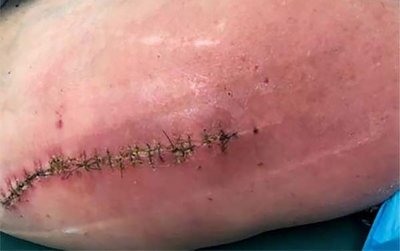
Hip replacement surgery recovery for older adults involves a complex, year-long journey that extends beyond physical healing, according to a Swedish study that followed 30 community-dwelling seniors through their first year after surgery.
Amid the chaos at the Social Security Administration, dance the 3-step to get the assistance you need
go to article
Scientists Pinpoint
Key Lifestyle Factor
Linked to Cognitive Decline
Among Older Adults
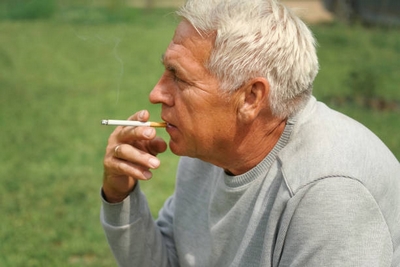
A major study suggests that smoking could be one of the most powerful lifestyle habits affecting how quickly our thinking skills decline with age.
go to article
9 Senior Citizen Discounts
That Quietly Vanished This Year
10 Best Free (or Cheap)
Online Classes
for Seniors and Retirees
Older adults
who feel criticized
by loved ones
are more likely
to develop depression

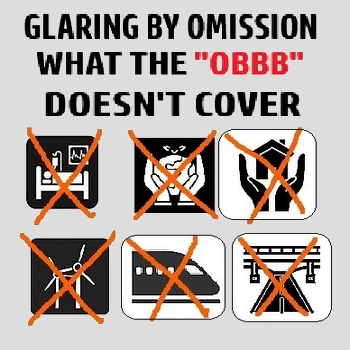
One might assume that a document spanning around 1000 pages would address the issues confronting America and Americans. However, it does not. Indeed, there is plenty of content in that "One Big Beautiful Bill" that appears appealing. Yet, it is merely a collection of promises, insinuations, and funds allocated towards an agenda that supports "Project 2025" while failing to address what America truly requires, leaving us significantly behind Asia and Europe in achieving those goals.There’s a well-known saying among mechanics: "If it ain’t broke, don’t fix it." Sadly, the president and the entire Republican party seem unfamiliar with this phrase. The OBBB attempts to repair aspects of our government that are functioning perfectly well.Here are some of the issues that Trump and his associates believe are top priorities for the average American.- Restructuring Federal Agencies: This involves limiting the authority of specific departments, breaking down sections of the administrative state, and changing agency functions to fit conservative goals.- Social Policy Reforms: This includes reversing the federal acknowledgment of same-sex marriage and eliminating diversity, equity, and inclusion (DEI) initiatives in federal agencies.- Cutting federal spending and privatizing some government services, including parts of the National Weather Service and the Transportation Security Administration (TSA).- Environmental Deregulation: This means less federal control, backing fossil fuel industries, and possibly dismantling agencies like NOAA.- Healthcare Policy Overhaul: The strategy involves repealing the Affordable Care Act (ACA) and encouraging market-driven healthcare options.Naturally, there is much more, but it is too extensive and painful to detail.Do you think the urgent issues facing America include same-sex marriage, diminishing the authority of the Justice Department or any other agency? Is it about cutting back on weather forecasting or the TSA? Or perhaps relinquishing oversight of fossil fuel industries.On the other hand, this legislation completely overlooks what we have desperately needed for many years and have failed to secure in any legislation put forth by any political party.1-America requires a national healthcare system that is either free or low-cost, similar to what every other developed nation has. The BBB only complicates our access to affordable healthcare.2-We have made significant strides in environmental protection, but we must do even more for ourselves and future generations. The BBB aims to reverse that progress by deregulating everything related to the air we breathe and the water we consume.3-There is no provision in the bill for affordable housing for the millions of Americans who are homeless or living on the streets.4-The bill does not support alternative energy initiatives. How much longer can we rely on foreign oil from nations that despise us?5-We urgently need enhanced mass transit options, including a high-speed rail system as an alternative to air travel. There is nothing in the BBB addressing this need.6 Finally, where is the funding to repair our infrastructure, such as bridges, tunnels, and roadways? It is absent from this Big Beautiful Bill.Rather than conserving funds, this legislation will ultimately incur costs in the billions. Funds that ought to be allocated to address America's genuine needs. Funds that could save lives, provide shelter, improve air quality, lower energy expenses, and reinvest real money into the economy instead of handing it over to those who are already excessively wealthy. …bwc
Smart Ways
to Help
Your Adult Children's
Financial Lives
Elder Abuse
Is Easy to Miss
How to reduce
assisted living
facility costs,
according to experts
What you need to know
about aging in place at home
ARE YOU RETIRED
AND NEED/WANT
TO GO BACK TO WORK?
ADVICE FROM A
CAREER COACH!
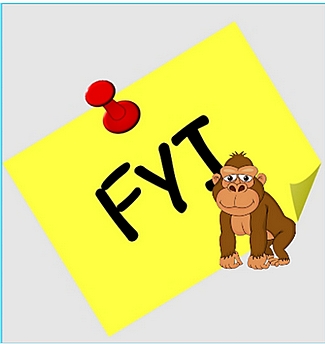
Gorillas have big bellies because their digestive tract is very large, not because they carry a lot of body fat. Gorillas have a diet that consists of only vegetable matter, much of which is green leaves of different sorts. Green leafy vegetables are the hardest to digest due to their large content of cellulose and complex starches, which is indigestible by mammals. Mammals require bacteria to break down the cellulose and complex starches. The bacteria in the gorilla’s digestive tract do this by fermentation, which requires a large volume to occur. In addition, green leafy vegetables are relatively low in nutrition so gorillas need to consume large amounts of these to obtain the necessary energy and nutrients to survive. The vast majority of this fermentative digestion occurs in the gorilla’s intestinal tract, which is very long and large. The gorilla’s intestinal tract is located in its belly, which protrudes due its great volume. It is this massive intestinal tract that gives the gorilla the impression of having a huge belly.
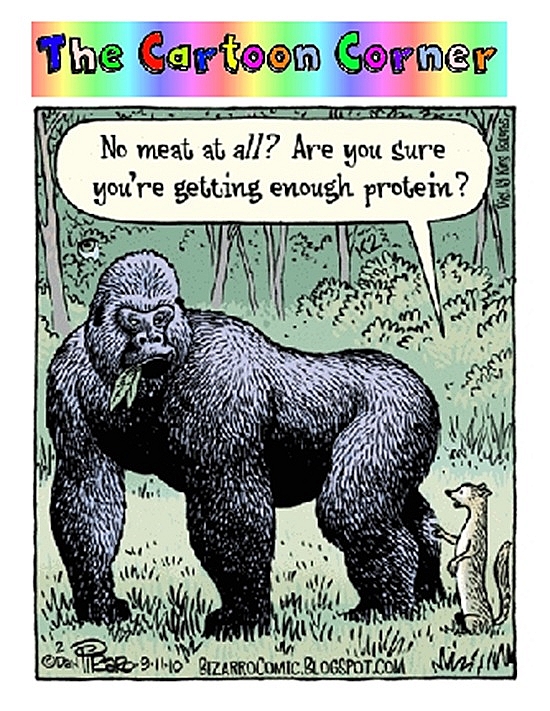


Happy July 4th. This holiday always brings to mind images of fireworks, flags, and family gatherings. The weather forecast for most of the country predicts a hot, dry summer day. That’s perfect for one of America’s favorite ways to celebrate independence — a backyard barbecue. Nothing says July 4th quite like grilling hamburgers, hot dogs, and steaks over an open flame. While we may not fully understand why roasting raw meat over fire became a symbol of patriotic pride, it’s deeply ingrained in the holiday’s traditions. It’s become almost a ritual. People gather outside, the smell of charcoal or wood smoke fills the air, and plates are loaded with food and drinks. Usually, that includes plenty of meat that’s been cooked to perfection, and a variety of cold beverages — mostly beer, soda, or sometimes ceremonial cocktails.The main attraction at any July 4th cookout is always the food, but the real event is the crowd. When you tell friends and family you’re firing up the grill, they show up in droves. It’s a gathering of different people, each with their own attitudes, opinions, and stories. Some show up with smiles, others with grumbles, but everyone joins to enjoy the warmth of friends, good food, and celebration. And this year, as never before, those conversations will turn to politics. It’s almost unavoidable. Whether your guests love or hate the current administration, Donald J. Trump will be on everyone’s lips. His name will be the topic of debate, no matter what the crowd.Trump will be the uninvited guest that everyone just can’t ignore. His presence will dominate discussions, even among those who’d rather avoid politics altogether. It’s almost like a ritual for many Americans. They gather around the grill with hot dogs and burgers, only to end up debating the direction of the country. No matter what side of the aisle you’re on, Trump’s name tends to spark strong reactions. Some will defend him passionately, others will criticize him bitterly. But all will talk about him.This year feels more charged than most. Unlike previous celebrations, the political climate is tense. The thing that we’ve always celebrated — our freedom, our independence from tyranny — hangs in the balance. Many see the current political landscape as a threat to the very rights the Founding Fathers fought for. They remember the Revolutionary War, the Declaration of Independence, and the Bill of Rights, which guaranteed freedoms like speech, assembly, and protection from government overreach. Yet, under the current administration, some believe these rights are under attack.There are claims, from critics and supporters alike, that certain policies now threaten to erode the freedoms enshrined in the Constitution. The idea that our government could be turning into something resembling the very tyranny early Americans fought against seems to be weighing heavily on minds. Some see parallels between the actions of recent leaders and those of old monarchs or oppressive regimes. This political climate, combined with deep divisions, turns a simple holiday feast into a battleground for ideas.Although Trump often portrays himself as a man working to make America great again, his critics argue that his actions threaten the very fabric of American democracy. They accuse him of pushing policies that override constitutional protections. Historical figures like King George III wreaked havoc during the revolution, and some say Trump’s actions today resemble those old conflicts. They see him as overturning cherished rights, rewriting laws, and dismissing established norms. The concern isn’t just national pride but the future of the country’s core freedoms.As fireworks explode overhead this Fourth of July, it’s a reminder that all Americans are connected through the shared history of fighting for independence. But now, many wonder if what they’re witnessing is a new kind of struggle — not against a foreign king or army, but against threats from within. This holiday’s traditional symbols of freedom are taking on new meaning. The question remains: can the nation hold true to its founding ideals, or will these recent political battles reshape America’s destiny? ...bwc

see more
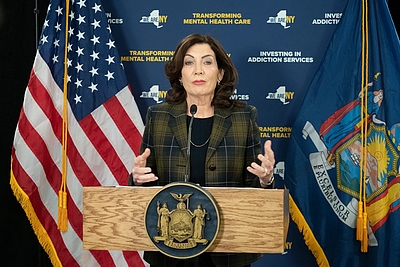
The new plan outlines over 100 actionable proposals aimed at helping residents age with dignity, independence, and full community support.
see more

By Sy BolesAt a conference ... at Harvard Law School last month, researchers from multiple disciplines, ...explored how current laws too often strip decision-making authority from older adults, and what improvements could help those older adults keep more of their autonomy as their capacities decline.
see more

A major risk factor for most skin cancers is too much exposure to the sun's ultraviolet (UV) rays. Making sun protection an everyday habit can help prevent sunburns and lower a person's chances of getting skin cancer.see more
Seniors and breast cancer:
Why aren’t older women
told to get mammograms?
- *
Some older Americans splurge
to keep homes accessible
while others struggle
to make safety upgrades
In sickness and in health,
older couples mostly
make Medicare moves together
Hey kids,
seniors
don’t feel that old

- July 4th marks the anniversary of the adoption of the Declaration of Independence in 1776, when the United States declared independence from Britain.- The first Independence Day celebrations included bonfires, fireworks, and parades, with John Adams famously predicting it would become a "great annual event."- The tradition of fireworks on July 4th was popularized by John Adams himself, who believed fireworks symbolized the "joyous celebration" of independence.- While July 4th is primarily a U.S. holiday, countries like the Philippines and Rwanda also celebrate their independence days in July, but on different dates.- Although widely celebrated, July 4th is not a federal holiday in the U.S. (meaning government offices are open), but it is recognized as a patriotic holiday with widespread festivities.



Are Social Security Benefits
Safe for Older Adults
Struggling
with Student Debt?

The Administration’s plans to collect student loan debt have collided with concerns about reducing Social Security benefits and pushing older adults into poverty
By Kerry HannonOn average, Americans saved 7.7% of their paycheck in their employer-provided retirement plan last year — a record high — and nearly half of participants juiced up their savings rate, up from 39% who did so in 2022.
go to article
Nutrition Professor
On How "Food Nostalgia"
Can Encourage Seniors
at Mealtime

Asking a senior to describe what they consider to be an example of a “comfort food” can be a good start, according to Boyd. “Perhaps they’ll mention some of the foods they ate when growing up or that had some family significance,” she says. “Often, they will share a memory or offer a reflection on a food tied to their own culture.”
go to article

Mental-healthcare services are more difficult to access under Medicare — and as a result, older adults are more likely to wind up in the emergency room or hospitalized in the event of a mental-health crisis, a new study found.
go to article
"The Whole Thing Was A Treat":
Older Adults Are Sharing
The Once-Common Things
That Seemingly Vanished
From Society
Nearly half of older adults
worldwide struggle
with daily tasks,
study reveals
9 regrets
older adults share
and what they teach us

Leaving your home and moving into an assisted living facility (A.L.F.) is not a decision everyone should make. It’s not the first choice for most seniors looking to spend their later years comfortably. For many, staying at home still feels like the best option. Assisted living is often seen as a last resort. It ranks lower in the options for retirement living, just above nursing homes on the spectrum of care. Many see assisted living as a place for people who can’t manage on their own anymore, rather than as a desirable lifestyle choice.So, why would anyone even consider moving into an A.L.F. as an alternative to living at home? The answer is complex. Some seniors face health issues that make staying at home difficult or unsafe. For example, if an elderly person has mobility problems, struggles with daily tasks, or needs around-the-clock care, an assisted living facility might be the only safe option. Others might choose an A.L.F. because they fear loneliness after losing a spouse or seeing friends pass away. Some want more social interactions but don’t want the full responsibility of managing a house.Health conditions play a big role in this choice. Conditions like dementia, arthritis, or recovering from surgery can make everyday tasks tough. For these individuals, moving to an assisted living facility provides necessary help with activities like bathing, medication management, and meal preparation.Cost is also a factor. In many cases, living at home might seem cheaper at first. But, when you add up in-home care or upgrades needed for safety, it can become costly. Assisted living may seem expensive, but it bundles services into a manageable monthly fee.Despite the negative perception, some seniors find that moving to an A.L.F. helps them regain independence in a controlled environment. They benefit from scheduled activities, social events, and health monitoring. For some, it provides peace of mind for their family knowing they are close to medical help if needed.In the end, the decision to choose an assisted living facility over staying at home depends on many personal factors. It isn’t an easy choice, and not everyone needs it. For most seniors, staying at home remains the best option. But when health or safety risks increase, an assisted living facility can be a practical alternative. The decision involves weighing safety, independence, finances, and personal comfort. ...bwc↓
Disproportionate
Hospitalization Rates
Among Older Adults
Highlight Ongoing
COVID-19 Threat
Caring for older Americans’
teeth and gums is essential
but Medicare generally
doesn’t cover it
Dementia cases
are on the rise —
avoid these 12 risks
to keep your brain healthy
Late Start Money Tips:
4 Ways To Get Rich
After the Age of 50
DO YOU WANT TO KNOW
WHEN YOU WILL DIE?

- Tomatoes are the world's most popular fruit (commonly treated as a vegetable), with over 180 million tons produced annually worldwide (as of recent data).- China is the top producer of tomatoes, accounting for approximately 50% of global tomato production, followed by India, the United States, and Turkey.- Tomato consumption has increased steadily, with the average American consuming about 22 pounds of fresh tomatoes per year.- A typical raw tomato contains about 95% water, and is a rich source of vitamin C, potassium, folate, and antioxidants like lycopene.- The tomato industry generates billions of dollars globally, supporting millions of farmers and workers, especially in countries like China, India, and Mexico.



Deaths from heart attacks
are way down.
Here’s what’s killing
us instead
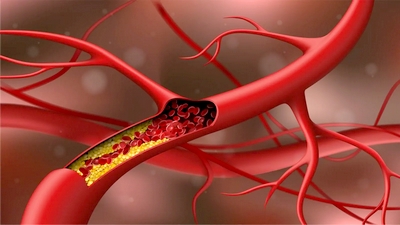
“You might develop heart failure — where the heart is unable to pump enough blood to meet the body’s needs and you’re always short of breath,” he said. “Or maybe you’re on a number of medications for blood pressure, fluid retention and cholesterol, or you never feel your best.
Research suggests a surprising link between blood type and stroke risk, with people carrying one specific group A blood type facing a higher likelihood of stroke before age 60.
By Kimberly BonvissutoRemaining independent and self-sufficient were among the top priorities of aging, along with having the financial resources to support themselves in retirement, for respondents to a new survey.
By Lucy NotarantonioFor the first time in the world, a Korean research team has discovered how aging in one part of the body can spread to another via the bloodstream.
The truth behind the foods, drinks and habits that can affect your numbers
see more
[][][][][][][][][][]
7 “Innocent”
Senior Discounts
That Are Actually Traps
If you're doing
these 7 things
after 60,
you're not just aging —
you're thriving
Each cup of coffee
boosts healthy aging
by up to 5%,
new study finds


In May of 2011 President Barack Obama went before the nation and announced[1] that American forces had killed al-Queda founder and mastermind Osama bin Laden mainly in retaliation for the 911 attacks. It was a simple address without jubilation or self-praise. It was also a definitive statement in so far as there was direct and definite confirmation that bin Laden was, indeed, dead. It was a triumphal moment for America, and the world and for President Obama. It was defining moment for his presidency and remains so to this day. Compare that moment to the one we saw on June 25 of this year. In the same White house location and at the same podium, President Donald J. Trump stood before the microphone (bolstered by two of his toadies) and proclaimed [2], without any real confirmation, “We completely obliterated Iran’s nuclear facilities.” A statement that, to this day, may or may not be true. Why did Trump make such a premature statement? Why did he use the word “obliteration” instead of a less decisive word like dismantling or elimination? The reason is simple.Like many Americans on that evening in May 2011, the then citizen Trump, watched Obama’s address. Even he had to be impressed. It was a moment most of us will not forget. But I’ll bet that Trump thinks about that moment perhaps more than any of us. Not so much for it’s content, but because it was delivered by the one person Trump hates most in this world. Barack Hussein Obama.Without delving into why Trump has a "thing" for Obama (maybe it’s because Obama embodies everything Trump is not), I’ll simply state that our current president craved a moment of victory similar to that one. Aware that he might never experience such a moment, given the numerous failures he has encountered in his short time in office, he felt the urgency for it to happen now and to be extraordinary. He required a term that carried the same, or even greater, significance than "killed." Words like "damaged" or "destroyed" wouldn’t suffice. He sought a term with the same strength and impact as Obama’s. To emphasize how crucial this is for him, despite credible reports, he insists on using "obliterated," the only term that would provide him the confidence and self-importance and admiration he desperately seeks but will never have…bwc
[1] Obama address, May 2011…https://youtu.be/ZNYmK19-d0U[2]Trump address. June 25 2025…https://youtu.be/PhmGhIx7y_g?t=8
Does Assisted Living
Provide Assistance
And Promote Living?
Read more
A healthy lifestyle
can mitigate genetic risk
for early death by 62%
Read more
HOW TO EFFECTIVELY
COMMUNICATE
WITH YOUR DOCTOR
Read more
Older brains feel
‘reward’ from music,
even if they don’t like it
What Does
Aging Gracefully
Even Mean?
Read more
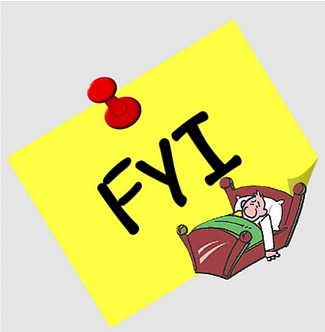
5 interesting facts about sleep:- Adults typically need 7-9 hours of sleep per night** to function optimally, though individual needs can vary.- Sleep is essential for memory consolidation**, helping the brain process and store information learned during the day.- During sleep, the body repairs and regenerates tissues**, supporting immune function and overall health.- Sleep cycles through different stages**, including light sleep, deep sleep (slow-wave sleep), and REM (rapid eye movement) sleep, each playing a unique role in health.- Chronic sleep deprivation can increase the risk of serious health issues**, such as heart disease, diabetes, obesity, and mental health disorders.
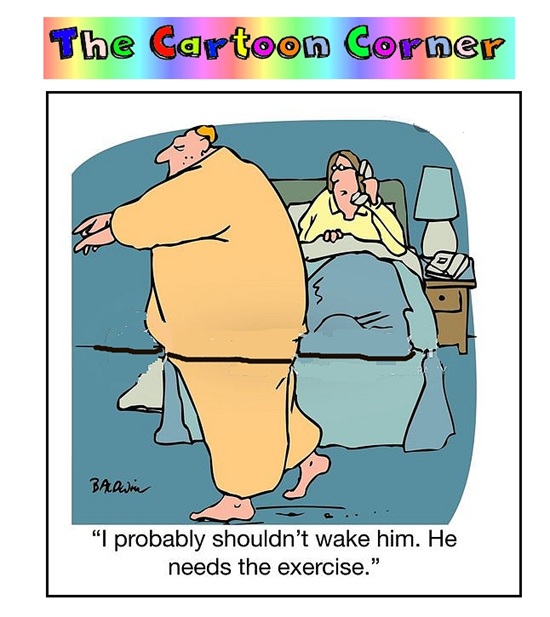



go to story

Proposed federal changes to SNAP funding and eligibility could impact millions of adults 50-plus
Salt has been villainized for decades—it gets blamed for high blood pressure, heart disease, and stroke. But what if the story is more complicated?
go to story
Nursing homes face 2 threats:
Trump's Medicaid cuts
and his immigration crackdown

The industry is highly dependent on foreign workers: More than 800,000 immigrants and naturalized citizens comprise 28% of direct care employees at home care agencies, nursing homes, assisted living facilities and other long-term care companies.
go to story
If you're doing
these 7 things
after 60,
you're not just aging —
you're thriving
Aging Well:
It’s a good time to be old
6 tips
to prevent tooth loss
in aging adults,
dental experts reveal
There is an old saying, "Nice guys finish last," which suggests that those who are kind, considerate, and agreeable often find themselves less successful than those who are more assertive or even ruthless. This implies that being overly nice can be a disadvantage, especially in competitive environments like dating or career progression. However, many would also agree that "you can catch more flies with honey than with vinegar," indicating that a positive and friendly approach is more effective in reaching your goals with others. While both of these sayings may apply in the "outside" world, here at the A.L.F. (Assisted Living Facility), the latter tends to be much more effective than the former. Unfortunately, many of our residents do not grasp this concept and often display a grumpy, even unpleasant, attitude in an attempt to get what they want. Sadly, this usually leads to the opposite of their desired outcome.
Many residents don’t realize the power of a positive attitude. Instead of smiling and asking kindly, they sometimes bark orders or display irritation. They believe that if they act upset enough, they will get their way. But in reality, this often backfires. Staff can become defensive or less eager to help, fearing they’ll be met with more negativity. Over time, an unpleasant attitude can push people away, making it even harder to get what they want. It’s a common mistake that turns simple requests into battles, and small frustrations into larger conflicts. In my experience I have found that people respond better to kindness and respect, especially in settings like this. When residents greet staff with a friendly tone and show appreciation, they usually find that support and service improve. It’s simpler, more effective, and creates a more pleasant environment for everyone involved.
This contrast highlights a clear lesson. While competition might favor assertiveness outside these walls, inside an assisted living facility, a positive, friendly approach usually gets better results. Patience, politeness, and respect often lead to quicker help and less stress. Many residents would do well to remember that even in small interactions, kindness can produce big results. Acting pleasant and cooperative tends to bring mutual respect, which in turn leads to a more peaceful and satisfying daily routine. It’s a reminder that in human interactions, warmth and friendliness often get the better of toughness and grumpiness.
Before I conclude, I want to inform you that while the "nice guy" strategy usually proves effective and should always be your initial approach when making a request, it's important to recognize that being firm, direct, and straightforward conveys that beneath that composed surface lies a lion, poised to strike. My recommendation is to be pleasant most of the time, but also make it clear that you are not easily taken advantage of. This approach significantly enhances your experience at an A.L.F. more manageable. …bwc
Senior homes refuse
to pick up fallen residents,
dial 911.
‘Why are they calling us?’
Read more
"Young People Need To Adapt":
21 Older Adults Are Revealing
The Behaviors Younger People
Should Stop Before
They "Get Left Behind"
Read more
GUIDE TO THE BEST
ADVENTURE HOLIDAYS
FOR THE OVER 60S
Read more
Readmission Rates
After Major Surgery
High for Older Adults
Read more

- The Industrial Revolution spurred innovations in refrigeration technology, which laid the groundwork for modern air conditioning.- The first modern air conditioning system was invented by Willis Haviland Carrier in 1902. He developed a machine to control humidity and temperature for a publishing company, improving print quality. His invention is considered the first modern air conditioner.- Air conditioning became more widespread in the 1920s and 1930s, initially used in theaters, department stores, and offices.- Post-World War II, air conditioning technology advanced rapidly, making units more affordable and accessible to the general public.- Today, air conditioning is a common feature in homes, vehicles, and various industries worldwide, with ongoing innovations focusing on energy efficiency and environmental sustainability.

THESENIORLOG-USA@HOTMAIL.COM

The concerning math
behind aging-in-place

Nationwide survey reveals what seniors are planning amid explosion in healthcare and real estate costs
Adults of all age groups are preparing to stay in their homes as long as they can. This aging-in-place (AIP) mentality is changing the way home buyers and renovators think.
Social Security privatization refers to a proposal that would switch the current U.S. Social Security system to one that allows individuals to invest a portion of their payroll taxes in private investment accounts. While the subject produces a lot of excitement, here's what experts say could go wrong.
click here

The researchers noted that their findings contradict some previous studies, particularly one from the UK Biobank that suggested higher dementia risk with sweetened beverage consumption.
click here
9 Foods that Help Lower
Your Blood Pressure
see more
see more

Yesterday afternoon, I stepped out of my cool, air-conditioned cocoon and was immediately hit by a blast of heat that felt just like stepping into a furnace. I looked at my phone to check the weather, and what I saw confirmed what I was already feeling — it was scorching outside. The temperature had climbed to 98 degrees, and with the humidity at 56%, that made it feel even hotter — like a blistering 106 degrees. Most people, faced with such oppressive heat, would have turned right back inside or sought out someplace cool and dark to hide. But I didn’t. Instead, I decided to walk to my room, choosing the outdoor route across our parking area. As I strolled along, feeling the warmth beneath my feet and on my skin, I was suddenly transported back to a different time — my childhood days growing up in Brooklyn, long before air conditioning became a household staple.For many, dealing with city heat can seem like a real hardship. The endless sticky days, the sun bouncing off concrete buildings, and the lack of any real escape — it can feel overwhelming. But in my eyes, those hot summer days had their own kind of magic. We kids saw summer differently. To us, it was pure freedom. No heavy winter coats, no layered sweaters — only shorts and T-shirts that took seconds to put on. The summer heat meant we could run freely all day long. We played stickball with makeshift bats and rubber balls, chasing them down in crowded alleys. We played war games, hiding behind cars, jumping from curb to curb, pretending to be soldiers in a real battle. Hide and seek in the shadows of buildings, tag through the packed sidewalks — all day long, until it was finally time to head home for dinner.After our meals, we’d sit on the stoop, the front steps where everyone gathered, and shoot the breeze with friends we’d made that summer. We’d talk about school, the neighborhood, or plans for the next day. Sometimes, we'd make up stories or tease each other over small things. Those simple moments made the hot evenings lively, full of laughter and familiar voices. We’d be sweating and sticky but happy, just enjoying those long, carefree nights.And the food — oh, the food of summer! That was part of what made those days special, too. Summer-only treats and snacks that tasted better in the heat. Nothing beat a good ice cream cone on a hot day. Back then, it wasn’t just about convenience, it was almost an event. The ice cream came from a man in a crisp white uniform, who drove around in a white truck painted with a giant picture of a chocolate “pop.” You could spot him from a block away. When you saw that truck or heard the bells, everyone knew it was time for a cold treat. For just 10 or 15 cents, you could get a cone or a push-up, depending on what you liked.Summers were cheap too. The little money we saved from allowances or extra chores meant we could indulge. A dime bought us a small happiness — a simple pleasure that made the heat a little easier to bear. No fancy ice cream shops or expensive snacks — just that familiar truck and the joy of a simple treat on a blazing day. Back then, summer was all about enjoying those small, fleeting moments — days full of sun, games, laughter, and good food, all woven together by the warmth and the innocence of those carefree childhood years.Today, we seek refuge from the sun. We hear that those rays can be detrimental. They might make your skin age faster or, even worse, lead to cancer and death. Children no longer play outdoors as they once did. Each season blends into the next when you’re fixated on your X-box or smartphone. I understand it’s a changed world. Kids encounter threats we could never have envisioned. Yet, I can’t help but feel a sense of loss for them, as they have missed out on so much joy, affection, and adventure. . . . bwc
4 Ways to Cultivate Wellness
in Your Golden Years
Read more
Strokes are more
common in older adults
Read more
Resident-to-resident aggression
common in assisted living
Read more
Senior homes refuse
to pick up fallen residents,
dial 911. ‘Why are they calling us?’
Read more
"Young People Need To Adapt":
21 Older Adults Are Revealing
The Behaviors Younger People
Should Stop Before
They "Get Left Behind"
Read more
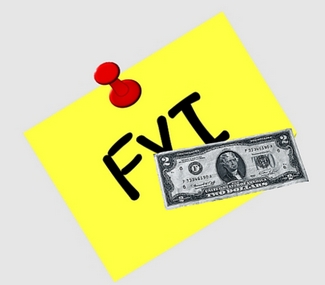
- Despite being less common than other denominations, the $2 bill has been in circulation since 1862. Its rarity in everyday transactions often makes it a collector's item or a novelty.- The current $1 bill features 13 different design elements, including the 13 steps on the pyramid and 13 stars, representing the original colonies. The number 13 appears repeatedly as a nod to American independence.- The $100 bill, featuring Benjamin Franklin, is the most counterfeited U.S. note. To combat this, new security features have been added over the years, including a blue security ribbon and a color-shifting bell.- Before paper currency, the U.S. used coins and other forms of barter. The first official paper money was issued during the Revolutionary War by Continental Congress, known as "Continentals," which rapidly depreciated in value due to inflation.- The $10,000 bill, featuring Salmon P. Chase, was used primarily for large transactions between Federal Reserve Banks. It stopped being printed in 1945 and was officially discontinued in 1969, but some still exist as collectibles.

THESENIORLOG-USA@HOTMAIL.COM


For some older adults, summer can highlight feelings of loneliness or isolation, especially if family vacations or busy schedules mean fewer visits from loved ones. Seeing others engage in vibrant activities may intensify a sense of exclusion.
An estimated 31.8 million seniors get by on less than $2,000 a month, and Social Security provides 100% of income for 21.8 million American seniors, according to a new study released Monday by The Senior Citizens League.
click here

Long thought to be an inevitable, olfactory consequence of aging, a longevity expert explained how the smell develops — and how one superfood can help banish it.
click here
Some Republicans
balk at Medicaid cuts

The Senate’s deep cuts to Medicaid in the tax and spending megabill are setting off alarm bells among some Republicans, complicating leadership’s effort to get the legislation passed by July 4.
Expenses don't go away when you're retired. You'll be spending money to take care of yourself … just without income coming in. You may be prepared for costs like your home, car, and utilities, but what about those expenses that you may not have thought about?
click here
Older adults with dementia
misjudge their financial skills
– which may make them
more vulnerable to fraud,
new research finds
Older adults diagnosed with dementia lose their ability to assess how well they manage their finances, according to a recent study I co-authored in The Gerontologist. In comparison, people of the same age who don’t have dementia are aware of their financial abilities – and this awareness improves over time.
By Riley Schnepf
The housing crisis no one wants to talk about isn’t about affordability for Millennials or Gen Z. It’s about aging homeowners staying too long in homes that no longer serve them, and waiting until it’s too late to downsize.
From the editor...
Reading time: 4 min. 30 sec.After a spring marked by unusually cool temperatures and a significant amount of rain throughout the Northeast, the weather has suddenly shifted. It feels as if the seasons have swapped roles overnight. Instead of the chilly, damp days we experienced, we are now greeted with intense heat and sticky humidity. The temperature has leapt from a comfortable 56 degrees under thick cloud cover to well over 90 degrees under clear, bright sunshine. The change is dramatic and almost instant. It’s the kind of transformation that makes you feel like someone flipped a switch. The sunny skies and warm breeze might be a relief after those long, cold months, but this kind of extreme heat also brings risks, especially to older adults. High temperatures can cause dehydration, heat exhaustion, and even heatstroke. For seniors, these dangers are more serious and can develop quickly if precautions aren’t taken. That's why I feel especially lucky to be here at the Assisted Living Facility, where climate control keeps me comfortable and safe no matter how hot it gets outside.I've seen many challenges that residents of an Assisted Living Facility face, from lack of privacy to boring, repetitive menues. But the climate control system here is something I truly appreciate. Every room has its own air conditioning unit, giving each person the ability to adjust the temperature to their comfort level. This means I can stay cool in my own space, even if others prefer it a bit warmer. Besides the individual units, the building features central air conditioning that keeps the common areas like the dining room, lounge, and hallways cool and comfortable throughout the day. This centralized cooling system ensures that no matter where I go within the facility, I don’t have to worry about feeling too hot or sticky.The facility also has double automatic sliding doors at the entrances and exits. These doors help us keep the space cool by preventing warm outside air from rushing in whenever someone enters or leaves. This feature might seem simple, but it makes a big difference during a heatwave. It keeps the indoor temperature more stable and saves energy by reducing the strain on the air conditioning units. We don’t have to worry about constantly adjusting the thermostat or feeling the heat seeping in when we come and go.In case of any air conditioning problems or equipment failure, the staff here are quick to respond. We have a dedicated maintenance team on-site ready to fix issues immediately. During the hottest days, they make sure all units are running smoothly, minimizing discomfort. Knowing that help is just a call away gives residents peace of mind. They don’t have to worry about suffering through a heatwave alone or waiting days for repairs.Another benefit of living here is that all the cooling systems are included in the rent. I don’t pay any utility bills myself, which makes summer living far less stressful. I don’t have to track usage or guess what the bill might be. It’s one less thing to worry about during the heat of summer when staying cool is already a challenge. This all-inclusive setup makes the facility an ideal place to stay during the hottest months. Staying comfortable and safe in the heat makes summer much more enjoyable for everyone, especially older adults who are more vulnerable to its effects. This is why I feel fortunate to be here and not out in the heat on my own. ... bwc.↓
In case you missed it:
ARTICLES AND STORIES FROM THE ARCHIVES
American Council on Aging
helping older Americans
fight inflation
Read more
Understanding
Liver Regeneration
in Seniors
Read more
COOKING FOR ONE:
WHY COOK AT HOME
IF IT’S ONLY ME?
Read more
Promoting economic security
for older adults
Revitalizing policies that
benefit aging Americans
that within a decade
Read more
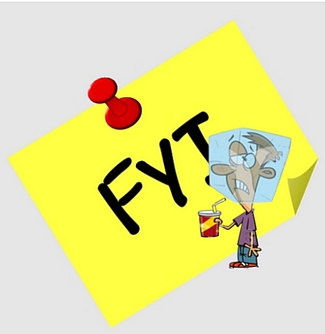
When someone chugs a frozen drink, the sudden, extreme temperature drop impacts the roof of the mouth in a way that sets off events like dominoes, alerting blood vessels to shrink, and causing brain arteries to dilate. This wild ride going on inside the body sets off the trigeminal nerve that sends sensory data known as referred pain to the mouth, face, and brain, leading to the usual exclamation of "brain freeze!" Unlike a regular headache or a migraine, the brain freeze — or ice cream headache — packs a wallop before passing, once oral temperature returns to a warmer temperature.

NEXT EDITION
WEDNESDAY, JUNE 25, 2025
©2025 Bruce Cooper



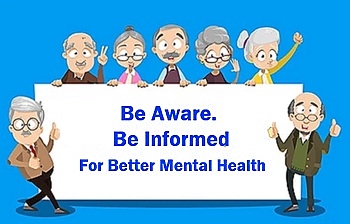
If you are among the 59.3 million people in the United States who are aged 65 or older, or if you are approaching what is often called "The senior years," you have most likely thought about the possibility of losing some mental sharpness. Concerns about cognitive decline, dementia, or Alzheimer’s disease can feel very real and personal. Many older adults worry about forgetfulness, confusion, or not recognizing friends and family as clearly as they once did. It’s common to wonder what the future holds and whether these issues are inevitable. Statistics back up those worries. Studies show that about 10% of seniors actually develop dementia, which can dramatically affect memory and daily life, while roughly 22% experience mild cognitive decline, a slight but noticeable drop in mental function. These numbers may seem distant, but they are quite real. They remind us that the risk is substantial, and the chance of encountering some level of memory trouble isn’t small.Just because some forgetfulness or confusion might happen does not mean it will. Not every senior starts losing their keys or forgetting names regularly. These can be normal parts of aging that many people manage without serious problems. Still, the odds are high enough that many think about ways to stay sharp. It’s natural to ask if there are steps to delay or reduce the chances of serious decline. While experts agree that there is no guaranteed way to prevent age-related memory loss entirely, some methods can improve your chances of maintaining mental clarity longer. You can fight to keep your mind as active and healthy as possible. It’s about giving yourself more time to stay sharp and independent as you age.Now, I will tell you what I know from my own experience. I am not a doctor or a specialist in brain health. I am just an ordinary man—79 years old—who has somehow managed to keep most of my mental faculties intact. I don’t spend my time doing crossword puzzles, brain-training apps, or trying complicated memory games. I find those boring and frustrating, and they usually don’t help me much. Neither do I believe in following fad diets or taking magic supplements promising to boost memory. What I do believe is very simple. It’s something that requires hardly any effort or special skill. Anyone can do it, and it really works. The key is staying informed—reading, listening, and being aware of what’s happening around you. When you keep your mind engaged with news or interesting stories, you keep your brain active.I also make it a point to surround myself with people who think like me. Conversations with friends, family, or even new acquaintances can be energizing and stimulating. Challenging your brain with meaningful dialogue pushes you to think quickly, remember details, and consider different viewpoints. These social interactions are not just enjoyable; they serve as mental exercises. You don’t have to do anything complicated—just talk about what you see around you, share opinions, or ask questions. It’s surprising how much difference this simple habit can make over time. Staying aware of current events, discussing books or movies, or even debating a topic keeps your mind on its toes.In summary, aging does come with some risk of losing mental clarity, but it is not a certainty. Taking small, straightforward steps—like keeping informed and staying socially active—can help you hold onto your mental sharpness longer. You don’t have to do fancy puzzles or expensive treatments. Maintaining a curious mind and enjoying lively conversations can give you a real edge. It’s about staying engaged with life and refusing to let aging turn your mind to mush. That’s a simple approach that anyone can follow, and it just might help you keep your wits about you as the years pass. ..bwc*Editor’s note: I’m purposely leaving Alzheimer’s out of this discussion because it is an actual disease whose causes are not fully understood.↓
new news for you
Older adults in the US
are increasingly dying
from unintentional falls
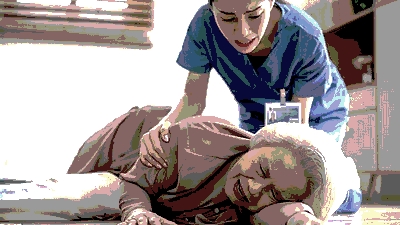
CLICK HERE
Many older people
embrace vaccines.
Research is proving
them right.
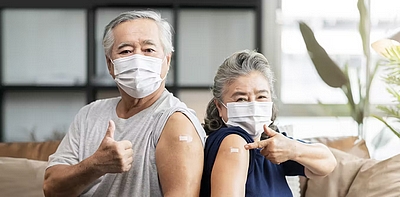
CLICK HERE
5 Years After Dad's Alzheimer's Death,
Bill Gates Is ‘Optimistic’ About
'Progress' Made in Fighting the Disease

CLICK HERE
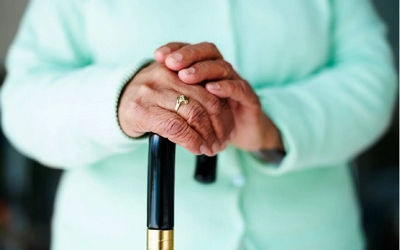
CLICK HERE
Coffee Lowers Your Risk
of Death By 14%—
If You Drink It Like This,
New Study Finds

CLICK HERE
Want to Live to 115?
Here’s What Research Says
You Should Do
Doctors Say
This is the #1 Diet
to Prevent Alzheimer’s
and Dementia
They’re not
your grandfather’s
video games.
But your grandfathers
are playing them.
American Council on Aging
helping older Americans
fight inflation
Understanding
Liver Regeneration
in Seniors
Misplaced your keys?
How to distinguish dementia
from normal age-related
memory loss
COOKING FOR ONE:
WHY COOK AT HOME
IF IT’S ONLY ME?
Promoting economic security
for older adults
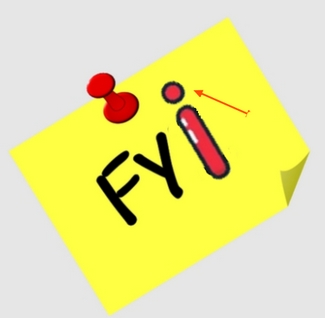
The Dot Over the Small Letter “I”
Is Called a “Tittle”
Remember to cross your t’s and tittle your i’s! Those little dots over letters such as the lowercase “j” are called “tittles,” a term that dates back to the 12th century. It can also refer to any other modifying marks on a letter, known as diacritic marks — that includes things like the two dots of an umlaut, the accent over the “e” in fiancé, the squiggly line (also known as a cedilla) under the “c” in façade, or the tilde over the “n” in piñata or jalapeño. In its earliest use, it referred specifically to the character ÷, which was once used as an abbreviation for the Latin word est, but is now often used as a division sign.




Reading time: 1 min. 43 secs.The United States has long captivated the imaginations of international travelers. Many have dreamed of visiting to experience the iconic sights they have seen in Hollywood films, read about in books, and heard about from friends. They have recognized our unique characteristics and boldness, as well as our warmth and hospitality. During World War II, numerous Europeans became familiar with American culture, and after the war ended, they were eager to deepen their understanding of us. Upon their arrival, which saw a significant influx of visitors, they found a country that reflected the glamorous depictions they had seen on screen. They discovered a nation abundant in natural beauty, bustling cities filled with impressive skyscrapers, and a diverse population that, despite its differences, managed to live together in relative harmony, embracing a variety of perspectives, including those related to religion and politics. However, this landscape has changed dramatically and swiftly. The Trump administration has cast a pall over the aspects of America that the world once admired. This is no longer the America they once knew, and with each day, it seems to be transforming into a nation that feels increasingly unfamiliar. What was once a nation where everyone was protected by one of the most amazing documents ever written, has become a place without the security of a constitutionally protected legal system, or a government that abides by the law.
Today, some ask if America is still a safe place to visit. The answer isn’t simple. Crime rates, domestic unrest, and political violence have risen in parts of the country, making some areas dangerous. The places that once seemed secure—schools, homes, neighborhoods—are now facing uncertainty. The sense of stability that held the country together is being tested. Many wonder whether the America they once knew still exists or if it is slipping further away. The idea of a nation protected by a powerful constitution, a place where laws protected everyone equally, feels less assured than before. Today, the United States appears to be a nation in flux—changing quickly and facing uncertain futures. For those living here, the sense of safety and unity that once defined the country is fading fast. ...bwc
People Are Now
'Washing' Their Blood
to Fight Aging.
Does It Work?
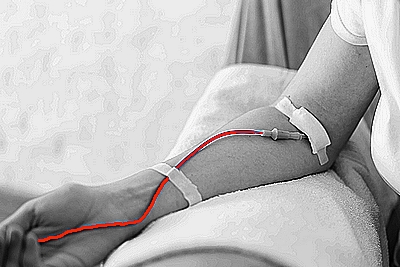
CLICK HERE
Difficulty swallowing
can make life hard
for older adults

Around a quarter of all people over 80 reportedly suffer from some form of the condition, and it affects up to half of all those seniors living in skilled care facilities.
In weekly small-group conversations, Life Story Club participants — many homebound or isolated — share their lives and build lasting bonds.
CLICK HERE
Heirs, Assets, and Arguments:
Why Elder Law Attorneys
Are Key in Probate Litigation

Probate is the legal process through which a deceased person’s assets are distributed to heirs or beneficiaries and debts are settled. While many estates pass through probate smoothly, disputes can and do arise—sometimes tearing families apart and draining the estate’s assets. This is where probate litigation comes in.
CLICK HERE
Do I Need
a Measles Shot
at My Age?
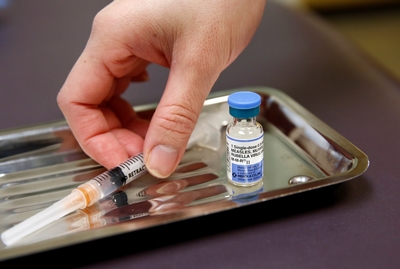
CLICK HERE
Can Air Conditioning
Make You Sick?
CLICK HERE
Older people get real
about what it's like
to move into
a retirement community
CLICK HERE
Study Reveals
Secret to Aging Well:
It’s in the Carbs You Eat
CLICK HERE
Old age isn’t what
it used to be
CLICK HERE
Watch Your Step!
Survival Rates
Following Hip Fracture
Worse Than For
CLICK HERE
50% of Those
on Social Security
Face Losses Averaging Over
$3,000 Because of
CLICK HERE
Age Is No Barrier:
How Dental Implants
Benefit Seniors
By Jeffrey Gomez
CLICK HERE
16 Small Business Ideas
for Senior Citizens
CLICK HERE
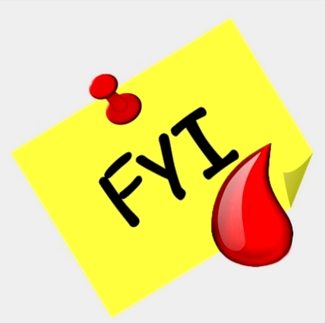
Facts About Blood
The heart pumps roughly 2,000 gallons of blood around the body each day. Human blood has three distinct parts: plasma, white blood cells and platelets, and red blood cells (watch 101). In general, blood ferries oxygen, nutrients, and hormones to cells in need while regulating body temperature and collecting cellular waste and byproducts, such as carbon dioxide, for removal. Explore its functions here.In adult humans, bone marrow produces all the body's platelets and red blood cells, while other organs, including the spleen and lymph nodes, assist white cell production. Some of these organs also run quality control on blood cells.Red blood cells are covered in antigens, protein molecules that let the immune system know to boot anything that doesn't match. In humans, the type of antigens you have determines your blood type, leading to four main types (A, B, AB, and O). For blood transfusions, it's crucial that individuals receive blood of their type, or their immune system will reject the donated blood.↓
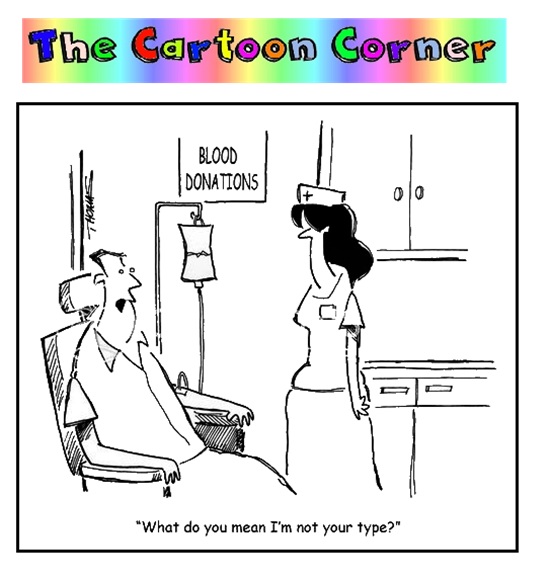




Reading time: 4 min. 50 sec.A "senior moment" is a common phrase many people use to describe those brief lapses in memory or moments of confusion that happen more often as people get older. Usually, the term is used humorously, as if to joke about old age and its effects on the mind. It plays off common images of elderly folks who sometimes struggle to remember things, mix up names, or forget where they put their keys. The idea is that these moments happen because aging can cause cognitive changes, making it harder to process or recall information quickly. However, it’s important to realize that everyone can have a forgetful day now and then. Even young people. But for those of us who are older, we encounter these moments more often. We live with friends and loved ones who show signs of slowing down mentally, sometimes over many years. At first, these memory slips might seem minor. Maybe someone forgets a name or asks the same question twice. Often, people don’t know how to handle these changes. They might ignore the signs, hoping they’ll go away. Or they might try to correct or remind the person repeatedly, which can lead to frustration. Sometimes, the frustration makes the situation worse, causing hurt feelings or even conflicts. Many times, people are unsure how best to support someone they care about who is losing their memory.In a place like the assisted living facility where I live, I see many residents at different stages of cognitive decline. Some struggle and need special care, while others manage quite well but have moments of forgetfulness. Our facility doesn’t have a separate memory care unit that is set up for residents with severe memory loss or Alzheimer’s. Instead, these residents stay with everyone else, mingling in common areas and participating in daily activities. The staff is trained to gently guide those who are experiencing the worst of their confusion. They speak clearly and calmly, always trying to reassure residents and keep them safe. Still, these residents can sometimes act in ways that bother others. They might repeat themselves often or forget where they are, even when they’ve been told many times. It can be hard for the other residents, especially if they have known the person for a long time or are close friends. When the person is a friend, it’s especially painful. We want to help, but it’s not always easy.People often ask what to do when a friend begins to show signs of memory problems. The truth is, nobody always knows the best way to handle these changes. It’s confusing and can feel overwhelming. Sometimes, the person with memory problems may become scared or confused about their own mind slipping away. That adds a new layer of sadness and concern to the situation.All these challenges remind us that aging isn’t easy—especially when it comes to mental health. We see how confusing and lonely it can be for those experiencing cognitive decline. It’s a reminder that patience and understanding are crucial. Recognizing these moments as a part of aging helps us be more compassionate. But it also makes us think about how best to support those who are affected. Because in the end, everyone deserves respect and kindness, especially when their memories fade and their world begins to change.I have a friend at the A.L.F. who is smart, perceptive, and very conscious of her environment. However, recently, she has been misplacing items, forgetting the day, missing doctor’s appointments, and repeating information she just shared with me. At the moment, I’m choosing to overlook it. I can feel her frustration when she eventually recalls things, so I prefer not to increase her stress. How I will handle this as time progresses is uncertain. Hopefully, it will be with compassion and understanding ... bwc
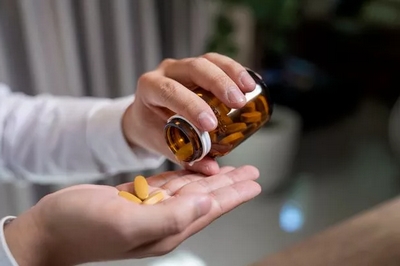
A new cholesterol-lowering pill may offer a breakthrough for those at risk of heart attack and stroke. Researchers found that a new cholesterol-lowering medication could be more effective and easier to use than current treatments.
Individuals with a slower pace of aging were protected from developing disease, disability and cognitive impairment, and lived longer than those with a faster pace of aging.
More older people are using cannabis products regularly, but research suggests their cannabis-related health problems are also on the rise.
The researchers found that older adults have good insight into their financial abilities, and this actually improves with age and experience.
Proposed legislation could drastically reduce healthcare and food aid for retirees — but understanding the risks now can help you take steps to protect your future.
GO TO STORY
In Other News...
Doctors Say
You Shouldn't Take
These 8 Supplements
Over 60
Drivers over 65
could be given
one gadget that would
help them keep
their license
Many Basic Money Questions
Stump U.S. Adults –
How to Boost Your
Financial Literacy
***
BACK PAIN:
HOW IT BECOMES A
CHRONIC PROBLEM
FOR BABY BOOMERS
***
F.D.A. Approves
Antibiotic for Increasingly
Hard-to-Treat
Urinary Tract Infections
***
Dementia care
comes with ‘catastrophic’ costs
for older adults,
families, study finds
***
10 Little Things to Remember
if You Struggle to Declutter
↓
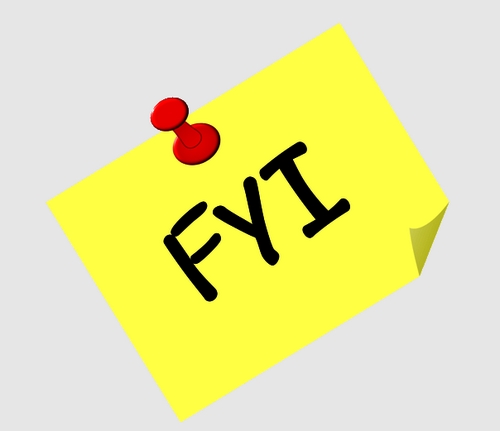

Certain parts of the U.S. have noticeably higher rates of dementia than others, a new study of VA healthcare data finds.
Find out more > click here
↓





























